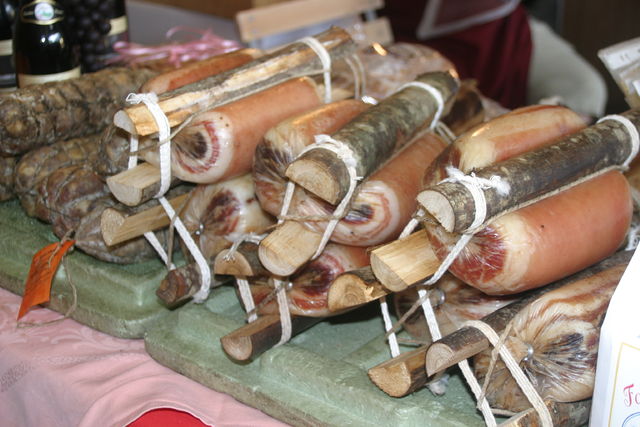Bacon vs Pancetta
The distinctions between bacon and pancetta can be found in the cuts, preparation methods, and flavor of each meat type. Pork, the generic name for meat from a pig, is a major food source in many cultures. However, for those who eat pork less frequently or are from a region where pig meat is less common, there may be confusion between the names given to various pork cuts. Bacon, which comes from one part of the animal, is popular worldwide. Pancetta, also from a pig, is more common in Italy. Although sometimes called Italian bacon, there are differences between the two that will be discussed in this article.
Bacon and pancetta are pork products that appear similar and have comparable taste, leading to some people in Italy using the terms interchangeably. However, they both have distinct characteristics and differences in their preparation, justifying separate names. Upon closer inspection, it becomes apparent that both bacon and pancetta originate from the animal’s belly. The similarities don’t stop there, as both pancetta and bacon are cured for an extended period. They are not dishes or recipes; they must be cooked by baking, steaming, or grilling before consumption.
Key Takeaways
- The main difference between bacon and pancetta is that bacon is smoked, while pancetta is not.
- Bacon typically comes in thin slices and is less salty, while pancetta is saltier and often comes in larger slices or dices.
- Bacon is made from both the belly and sides of the pig, while pancetta strictly comes from the belly.
What is Bacon?
Bacon comes from the pig’s sides or back. In America, bacon is also made using pork belly. It is produced by taking the side of the pork belly and smoking it. Bacon is sold in thin slices and can be eaten by frying, boiling, grilling, or smoking. Once fried, it becomes crispy and is a breakfast food item in most Western countries, where it is often served with toast and eggs.
What is Pancetta?
Pancetta strictly comes from the pig’s belly. There are two main methods of making pancetta: as a slab or as a rolled type, though there are many regional variations. Pancetta is made by seasoning a side of the pork belly with salt and a lot of pepper, then curling it into a tight roll and wrapping it in a casing to hold its shape. Pancetta is sold rolled up in the form of sausages and is never smoked. Thus, the curing process is the primary difference between bacon and pancetta.
Pancetta is used similarly to bacon, mostly as a flavor additive in soups and sauces. It is primarily used as a garnish.
What is the difference between Bacon and Pancetta?
Bacon and pancetta, also known as Italian bacon, have few differences.
- Preparation: Bacon is made by taking the side of the animal and smoking it, while pancetta is made by seasoning a side of the pork belly with salt and a lot of pepper, then curling it into a tight roll, and wrapping it in a casing to hold its shape. Pancetta is never smoked.
- Part of the Cut: In America, bacon comes from both the belly and sides. In Italy, pancetta comes strictly from the animal’s belly.
- Moisture: Bacon, which is smoked, is not very moist, while pancetta, which is not smoked, is moister.
- Flavor: Bacon is less salty because it comes in thin slices, while pancetta is saltier due to often coming in larger slices or dices.
- Size: Bacon is usually cut into thin slices, while pancetta is cut into thicker slices or dices.
- Shape: Bacon comes in thin slices, while pancetta is sold rolled up in the shape of sausages.
In summary, there are only slight differences between bacon and pancetta. The main difference is that bacon is smoked while pancetta is not. Due to the large size of pancetta, it normally has a saltier taste than bacon.
